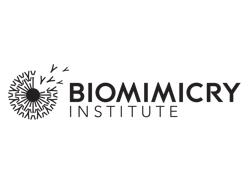Biomimicry Institute Sponsoring Global Design Challenge
Missoula, MT, October 12, 2015—Earlier this year, the Biomimicry Institute’s Biomimicry Global Design Challenge, sponsored by the Ray C. Anderson Foundation, asked hundreds of people from around the world to take on a challenge to fix our global food system by looking to nature for design solutions.
Now, eight finalist teams have been invited to prototype their solutions in an accelerator program that will award $100,000 to the top contender in an effort to increase speed to market for biomimetic solutions to global problems.
The challenge asks participants to tackle any aspect of the food system that could be improved by looking to nature for design guidance. In the first year of this challenge, the focus is on key food and agriculture issues like waste, packaging, agricultural pest management, food distribution, energy use, and other solutions.
Biomimicry Institute engaged 60 judges—which include biologists, business leaders, venture capitalists, and agriculture specialists—to select eight finalist teams. These teams have designed a range of solutions using biomimicry, such as desalination by looking to mangrove forests, soil remediation by emulating the digestive tract of earthworms, and a peer-to-peer networking app whose algorithm mimics the communication function found in a flock of birds.
The finalist teams traveled to Austin, Texas to present their ideas at SXSW Eco, pitch to judges on the marketability of their ideas, and participate in an awards event. The teams will spend the next eight months prototyping and testing their innovations, and will compete for the $100,000 Ray C. Anderson Ray of Hope Prize, to be awarded in 2016.
The Ray C. Anderson Foundation has pledged $1.5 million over four years to support the Biomimicry Global Design Challenge, a multiyear effort to crowdsource, support and seed promising innovations inspired by nature. Each year beginning in 2016, the Institute and Foundation together will award the $100,000 Ray of Hope Prize to the most viable prototype that embodies the radical sustainability principles of biomimicry. The first two years are focused on food systems, while subsequent years will change to other sustainability issues.
A new round of the Biomimicry Global Design Challenge opens October 5, which is another opportunity for teams to join and compete for the $100,000 Ray of Hope Prize. Individuals and teams can learn more about the firstround finalists and register for the next round at challenge.biomimicry.org.
